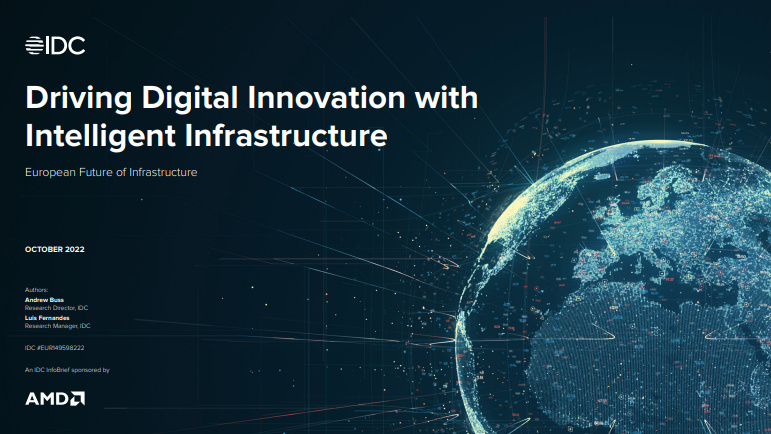Five strategic shifts to support ‘digital evolution’
Organizations must adopt a mindset of 'digital evolution' rather than transformation to succeed


In a post-pandemic world where we’re more connected than ever before and the rate of change is faster than it’s ever been, it’s time for IT professionals to move away from the concept of ‘digital transformation’ and instead embark upon a continuous journey of ‘digital evolution’.
As you will be aware, digital transformation is defined as a disruptive shift achieved via the digitization of non-digital products. In just a few short years, however, this concept has been jettisoned to the technology scrap heap – thanks in large part to the global pandemic.
Over a two-year period, organizations around the world were forced to pivot, and then pivot again. Now, organizations everywhere must adopt a mindset of digital evolution, the continual incremental adoption, and refinement of emerging technologies – or risk being left behind.

Greig Johnston is CEO at Vidatec and a former CTO. He has worked in the technology sector for over 25-years, buying and selling technology services. He specializes in helping businesses of all sizes develop digital strategies that deliver an exceptional end user experience on mobile and web.
RELATED RESOURCE

Driving digital innovation with intelligent infrastructure
Strong infrastructure investment is driving digital in all industries
There are numerous benefits to moving from a digital transformation to a digital evolution mindset. It’s generally more cost-effective to drive efficiency by evolving what you already have, rather than scrapping it and starting over. This approach is usually better for your people also so that they can improve familiarity before focusing on the next phase of innovation.
But how do you achieve this change – from digital transformation to digital evolution? Here are five strategic shifts needed to move your business from current to future state.
Setting clear objectives
Before you do anything else, bring your team together and collaborate on an agreed, long-range digital roadmap. This upfront investment of time will ensure alignment and clarity about your current or future state, how to get there, and with gaps identified.
It will also help you prioritize activities and set measurable success criteria. Finally, it will ensure you have identified key stakeholders (both internally and externally), which will enable you to engage the right people, at the right time, and in the right way.
Stay up to date with the latest Channel industry news and analysis with our twice-weekly newsletter
Digital estate mapping
Once you’ve created your digital evolution roadmap, map your existing digital estate – and keep coming back to it. This will help you identify patterns of overlap between your existing platform capabilities/features and uncover ways that platforms and data can come together to deliver new products, services and experiences for your customers and end-users.
The use of analytics and customer surveys can also play a key role in analyzing the effectiveness of your existing technologies.
Skills development is critical
A robust analysis of your objectives and technology capabilities is next. During this process, consider your existing web development expertise as well as the roles of UX, Service Design and Customer Research and Insights. Bring analytics and business intelligence, data engineering, and DevOps into the mix also.
Consider these roles in the context of your objectives and digital roadmap. If you need to upskill, redeploy, or source new talent, you’ll want to ensure relevant stakeholders are looped in and fully briefed timeously – and this will help.
Ensuring concise business alignment
The single best way to practice digital evolution – and maximize your investment – is to ensure full business alignment. To achieve this, an integrated approach is required, including having the right people and processes, a structured review process, regular communications and engagement, and a supportive workplace culture.
In moving from a siloed or singular to a connected and ongoing approach, you inevitably move from digital transformation to digital evolution.
Developing a financial mindset
With everything outlined so far, it’s hardly surprising to point out that digital evolution requires a different financial mindset – away from significant upfront investment and toward regular, sustainable long-term investment.
Invariably, digital transformation projects spend large sums, very quickly and in the early stages of the project because of the hunger to deliver big, and fast. But they usually ‘blow out’ and end up being scrapped. Instead, support digital evolution with sustained – and sustainable – long-term investment.
A good approach here is to develop a clear and concise business case against each objective on your roadmap. This will help you prioritize and budget, focusing spend where it delivers the most benefit.
Leaving digital transformation in the past and adopting digital evolution is essential for ensuring that businesses can continue advancing at a steady and sustainable pace in service of their customers, in line with the latest developments and with a people-centered approach.
Initially, it might feel like you’re swimming against the digital current, but it will ensure incremental, continuous improvement across your digital offerings.

Greig Johnston is CEO at Vidatec and a former CTO. He has worked in the technology sector for over 25-years, buying and selling technology services. He specializes in helping businesses of all sizes develop digital strategies that deliver an exceptional end user experience on mobile and web.
-
 Platform consolidation is the solution for MSPs’ growing pains
Platform consolidation is the solution for MSPs’ growing painsIndustry Insights As 2025 draws to a close, there's never been a better time for MSPs to rethink their tech structure
-
 Is diversity still a challenge in the channel?
Is diversity still a challenge in the channel?Industry Insights Despite progress, diversity remains a challenge in the tech channel, as women represent less than a quarter of the UK’s tech workforce and still face structural and cultural barriers
-
 Government CIOs prepare for big funding boosts as AI takes hold in the public sector
Government CIOs prepare for big funding boosts as AI takes hold in the public sectorNews Public sector IT leaders need to be mindful of falling into the AI hype trap
-
 How channel-supported smart decisions can pay off now and in the future
How channel-supported smart decisions can pay off now and in the futureIndustry Insights How can partners help retailers make smarter IT investments this Black Friday?
-
 Most in-house IT builds are doomed to fail – here’s why
Most in-house IT builds are doomed to fail – here’s whyNews New research indicates that DIY projects are a false economy
-
 Circular services: The next growth engine for channel partners
Circular services: The next growth engine for channel partnersIndustry Insights Why circular services are the next growth engine for channel partners
-
 The power of partner ecosystems in today’s tax landscape
The power of partner ecosystems in today’s tax landscapeIndustry Insights Technology transformations enable tax teams to embrace partnerships in a more collaborative manner
-
 When the vendor fails: Why B2B buyers need escrow as a priority for their software stack
When the vendor fails: Why B2B buyers need escrow as a priority for their software stackIndustry Insights Channel partners need stronger governance to navigate vendor collapse…

